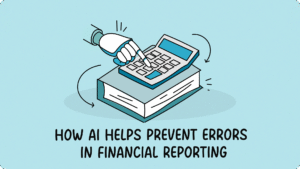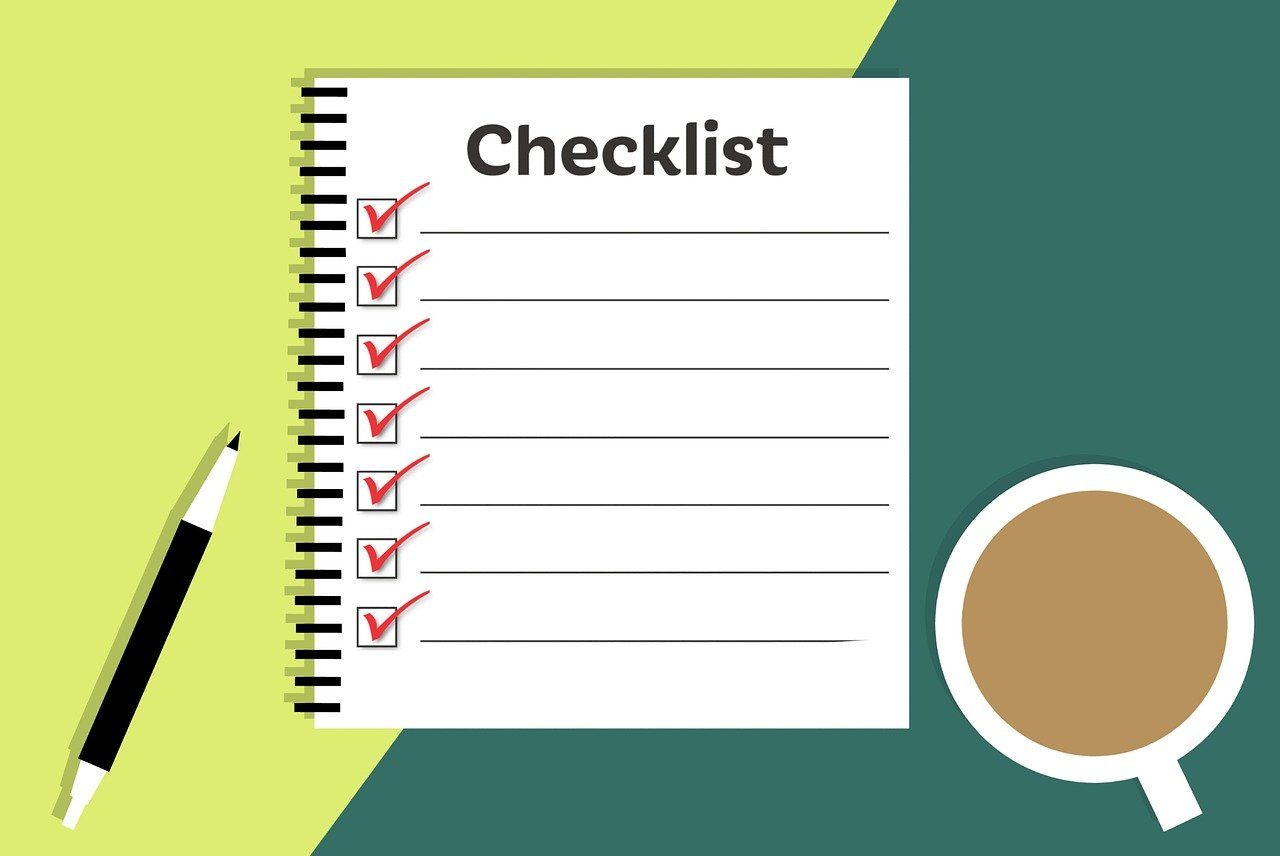The end of the year isn’t just about wrapping projects; it’s the critical moment to finalize your finances, maximize every deduction, and ensure you’re compliant, no matter where your clients or operations are based. Skipping this process can lead to costly errors, audit triggers, or missed opportunities to save money.
Let’s be honest: most small business owners would rather focus on clients than spreadsheets. But investing just a few focused hours now can save you weeks of cleanup, stress, and last-minute panic later
Year-end accounting can feel like a marathon, but this structured checklist will help you stop scrambling, clean your books confidently, and kick off the new business cycle with peace of mind.
Table of Contents
- Step 1: Define Your Timeline and Filing Deadlines
- Step 2: Ensure Complete Data Capture of All Records
- Step 3: Reconcile Every Bank and Payment Account
- Step 4: Value Inventory and Calculate Cost of Goods Sold
- Step 5: Update Fixed Assets and Post Depreciation
- Step 6: Resolve All Outstanding Client Invoices (Receivables)
- Step 7: Record All Unpaid Bills (Accounts Payable)
- Step 8: Handle Multi-Currency Gains and Losses
- Step 9: Catch All Deductible Expenses and Review Coding
- Step 10: Run Final Financial Statements and Reports
- Step 11: Meet with Your Accountant or Tax Advisor
- Step 12: Archive and Backup All Financial Records
Step 1: Define Your Timeline and Filing Deadlines
Before you start any data entry, you must confirm your accounting year. For many small businesses globally, the fiscal year aligns with the calendar year (ending December 31st), which is standard for sole proprietorships and LLCs in the USA or freelancers in many parts of Asia. However, some countries or business structures, like many companies in the Philippines or large corporations worldwide, choose a different period, such as an April 30th or June 30th year-end.
Once your year-end date is set, you need to immediately confirm your official tax filing and account submission deadlines with the relevant tax authority. For instance, in the UK, a private limited company that files its accounts more than 6 months late can face an automatic penalty of up to £1,500. Knowing your exact deadline well in advance gives you the power to plan properly and avoid unnecessary fines.
Step 2: Ensure Complete Data Capture of All Records
The foundation of accurate financial reporting is complete data. This cleanup phase requires you to meticulously gather all transaction records, ensuring every piece of the puzzle is accounted for. Make sure all your income is recorded, whether from invoices issued or direct payments received.
Crucially, you must record every single expense. Go beyond the obvious software fees and office supplies to include less visible costs, such as home office expenses, mileage allowances, and depreciation. If you’re a global freelancer dealing with different currencies, confirm you’ve captured all foreign income and expenses, as missing these details can lead to understating your true cost of doing business.
Step 3: Reconcile Every Bank and Payment Account
Reconciliation is the process of matching every entry in your accounting system to your official statements. You must verify that the final balance in your ledger precisely matches the closing balance for the last day of the fiscal year across all your accounts: bank accounts, credit cards, and payment processors like PayPal or Stripe.
During this review, you’re looking to clear up any discrepancies. This includes chasing any old deposits or checks that haven’t cleared the bank yet. If you find unexplained fees or transfers, allocate them now to the correct expense category. A clean reconciliation ensures your books are grounded in reality and ready for audit.
Step 4: Value Inventory and Calculate Cost of Goods Sold
If your business sells physical products, this step is mandatory. You need to conduct a physical count or stocktake of all products, materials, and supplies on hand at the close of the fiscal year. This value is critical because it directly determines your Cost of Goods Sold (COGS).
An accurate COGS figure is essential for determining your gross profit and ultimately your net income. Any error here—either overstating or understating your inventory—will directly result in misstating your profitability and, therefore, your tax liability. This step requires precision and shouldn’t be guessed.
Step 5: Update Fixed Assets and Post Depreciation
Businesses rarely use their assets up in a single year, so you need to account for their ongoing wear and tear. Review all your Fixed Assets (like computers, machinery, or vehicles) and record any new purchases made during the year.
The main action here is calculating and posting the depreciation expense. This non-cash deduction recognizes the expense of using an asset over its useful life, and it reduces your taxable income globally. Ensure you’ve applied the correct depreciation method (straight-line, declining balance, etc.) required by your local tax authority.
Step 6: Resolve All Outstanding Client Invoices (Receivables)
Before closing the books, you need a realistic picture of the money owed to you. For invoices you’ve issued but not yet received payment, list these as trade receivables. You need to analyze the likelihood of collection.
Any invoices that are significantly overdue (e.g., 90 days or more) and clearly uncollectible should be flagged for potential bad debt write-off. Writing off bad debt is a legitimate accounting practice that helps clean your Accounts Receivable and can reduce your taxable income, although the specific rules vary by jurisdiction.
Step 7: Record All Unpaid Bills (Accounts Payable)
Accounting principles require you to record expenses in the period they were incurred, not just when you paid them. You must ensure you’ve recorded all vendor invoices and bills received before the year-end date, even if the payment isn’t due until the next year.
Recognizing these trade payables gives you a more accurate picture of your true profitability and current liabilities for the year, adhering to the crucial matching principle of accounting. Failing to record these outstanding bills will overstate your profit and potentially lead to overpaying taxes for the closed year.
Step 8: Handle Multi-Currency Gains and Losses
If your business operates globally or uses multi-currency bank accounts, you face the complexity of foreign exchange (FX) fluctuations. When you finally convert foreign funds (like Euros or Pounds) into your home currency, the exchange rate will likely have changed since the invoice date, resulting in either a gain or a loss.
You must calculate and record these realized gains or losses for the fiscal year. This is a critical step for compliance in global reporting, as tax authorities require accurate tracking of these figures.
If exchange rates have been quietly eroding your revenue, check out our guide on managing FX risk for freelancers.
Step 9: Catch All Deductible Expenses and Review Coding
This is your final opportunity to maximize every legal deduction available to you. You absolutely don’t want to leave money on the table. Start by reviewing “Miscellaneous” or “Suspense” accounts where coding errors often hide, reclassifying anything that doesn’t belong there.
Additionally, gather records of all business expenses paid using personal funds (out-of-pocket). Reimbursing yourself now ensures those legitimate costs are recorded as business expenses. This final check guarantees that your expense categories are clean and your tax deduction total is maximized.
Step 10: Run Final Financial Statements and Reports
With clean data, you can now generate the essential, official documents needed for tax reporting and analysis. These reports serve as your final financial snapshot and your primary defense in an audit.
The three core reports you need are the Balance Sheet (confirms your Assets, Liabilities, and Equity balances at year-end), the Profit & Loss (P&L) Statement (shows revenue and expenses leading to your final Net Income/Loss), and the General Ledger (G/L), which is the full transaction history. Having these ready makes the handoff to your accountant seamless.
To gain a deeper understanding of these critical documents, read our guide: “Financial Statements: A Comprehensive Guide” for a full breakdown.
Step 11: Meet with Your Accountant or Tax Advisor
You don’t need to tackle this final stretch alone. The most strategic move is to schedule a meeting with your tax professional early in the new year. Provide them with your clean documentation, including the final reports from Step 10.
Use this meeting to ask key strategic questions:
– Are you missing any reliefs or allowances?
– Could you legally reduce your tax burden?
– Is your current business structure still optimal for your income level?
Having this conversation early reduces the panic and ensures you benefit from expert advice.
Step 12: Archive and Backup All Financial Records
Your last crucial step is protecting your data. You must preserve a permanent, unalterable snapshot of your year-end books. Even if you use cloud software, download and archive a copy of your full General Ledger and final reports onto a secure, offline drive or separate cloud service.
While record-keeping laws vary globally, many tax authorities require businesses to maintain records for six to seven years (e.g., in Canada and the UK). A secure, redundant backup is your best insurance policy against data loss or a potential audit years down the line.
Take Control of Your Year-End Stress
Skipping year-end accounting doesn’t just “let it slide”—it actively increases your risk of expensive penalties, tax surprises, and missed growth opportunities. By proactively staying on top of the numbers, you’re not just closing a chapter, you’re setting the stage for smart, predictable growth.
Fynlo helps freelancers and small business owners around the world simplify year-end accounting. From automated reconciliation to smart multi-currency handling, we make sure your books stay accurate — so you can focus on running your business, not balancing it.
Try a quick demo today to see how Fynlo can make your next year-end process stress-free.
You may also like these articles:







